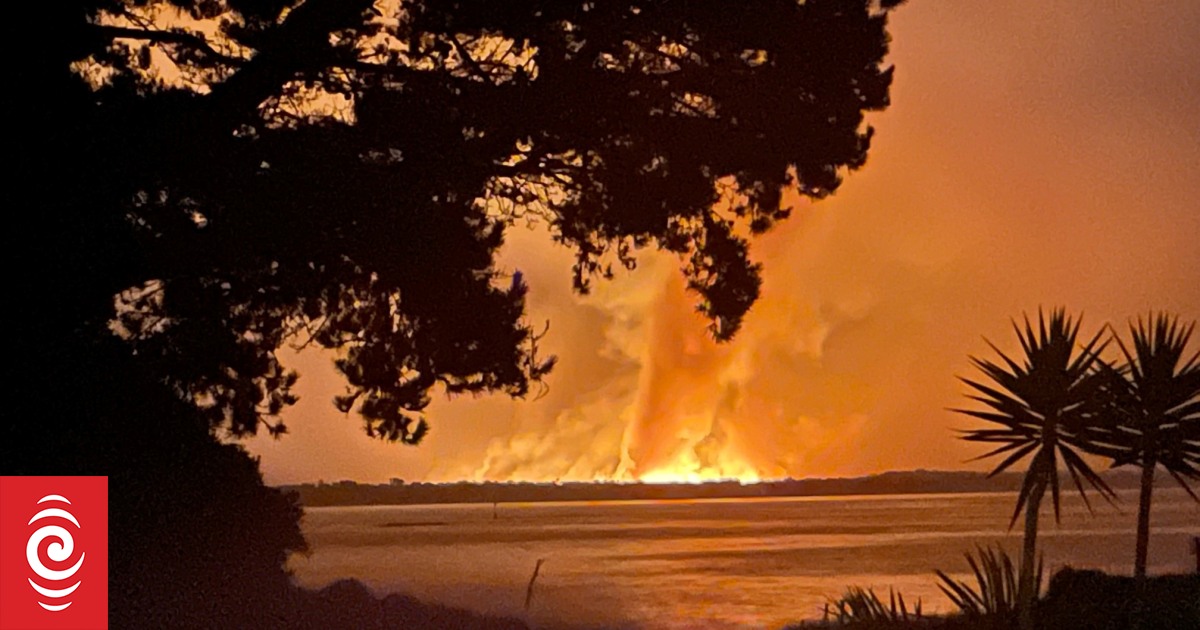
Photo: Supplied / Reef Lodge Motel
Investigators say a 2800ha fire that forced more than 30 Northland families out of their homes for days last year was accidental.
The investigation report into the Kaimaumau Fire was presented to community members this afternoon.
Investigators will not be laying charges. It cost Fire and Emergency New Zealand more than $7 million to fight the fire for over two months.
The fire started on 18 December on land being developed for avocado orchards and cleared of gorse and bamboo, investigators said.
The property owner had a permit to burn debris, but rising temperatures and strengthening winds spread the blaze out of control.
Fire and Emergency Te Hiku region manager Ron Devlin said “A number of factors contributed to the spread of this fire including heavy dry fuels, high temperatures and strong gusty winds”.
“Fire and Emergency also investigated whether there were any grounds for prosecution, and we have determined that there is insufficient evidence to carry out any prosecution.”
The fire burned until early February, above ground, but it was possibly still burning underground in peat, so was not considered to be put out.
The report said the fire spread through long grasses in a paddock, and by the time it was out of control it was too late for fire crews to get to the scene to contain it.
Evacuated families got home for Christmas, but were then evacuated again in the New Year, when homes were threatened once more.
The fire spread to within 200m of some beachside properties. Campers were banned for the summer to avoid complicating further evacuations.
The fire caused widespread ecological damage to areas of bush, swamp, scrub and dune vegetation.
Forest and Bird called it a “catastrophic disaster” for species in the Kaimaumau Wetland.
A dozen plant species in the area had already been on the verge of extinction beforehand, including ferns, mistletoe and orchids.
Some species there only live in Northland, including the Northland mudfish, and geckos.
Fire crews worked through widespread hazards, including swamps, damaged trees, deep holes from gum diggers and peat fires underground, battling dehydration and fatigue too.
There were also historically important sites damaged, including urupā of Ngāi Takoto.




